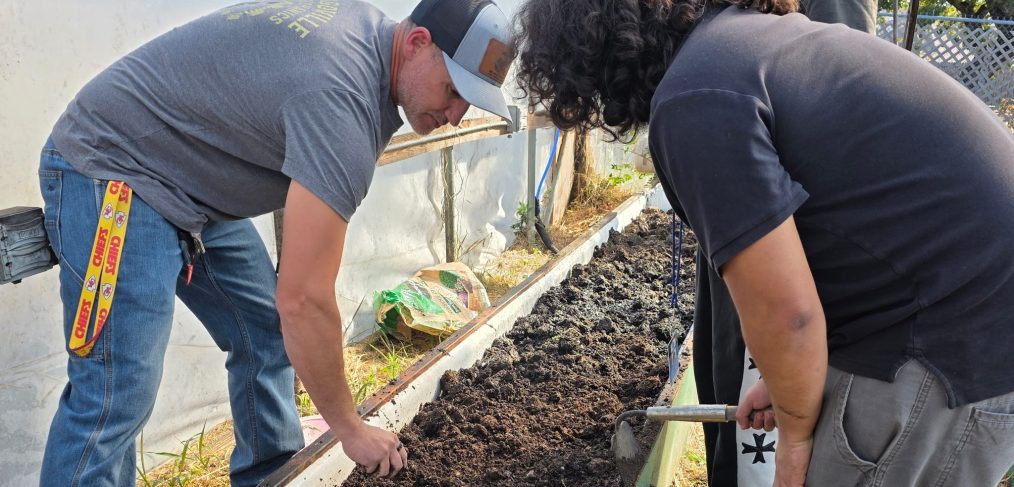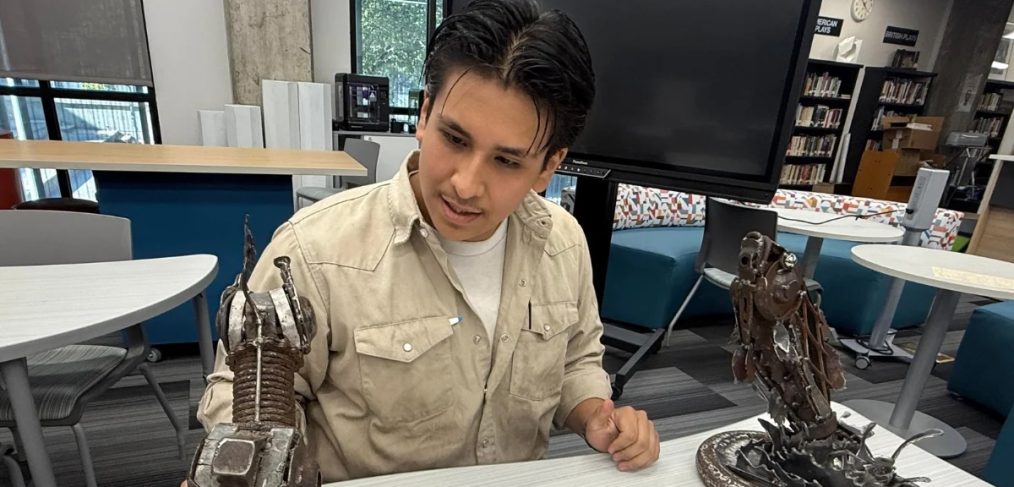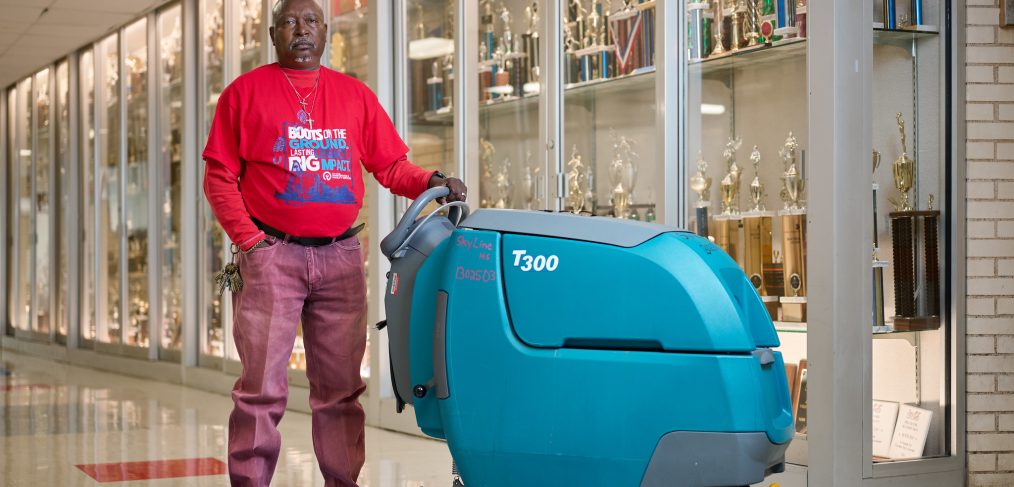Dereck Enderle, agricultural science teacher and campus military liaison at Seagoville High School, likes to joke with his wife that he enlisted in the U.S. Marine Corps to impress her. In truth, he said, he enlisted in 1999 after a year of college left him uncertain about his future.
“I come from a long line of service members,” he said. “My grandfathers fought in World War II and the Korean War, and my father served in Vietnam. I was a year into college and didn’t know what to do. One Monday, I saw a Marine recruiter, and by Sunday, I was in boot camp.”
At Seagoville, he wants his legacy to be one of expanding possibilities for students—helping them realize there are many valuable paths—military, trade school, college—and encouraging them to build successful futures no matter what they choose.

“The legacy I want to establish is the fact that there are other options for students. Not everybody needs to go to college. We need all types of people—even in the trades, like plumbers and electricians,” he said. “My daughter is in the Air Force doing aircraft mechanics. She’s learning the electrician side, taking those aspects, and then branching out and using them to better her future.”
Teaching turned out to be the path for him. In 2004, while serving as an aviation ordnance technician sergeant in the Marine Corps Reserves, Enderle completed Dallas ISD’s Alternative Certification Program and was hired as a teacher. However, he was deployed in Operations Iraqi Freedom before the school year began.
“About two months after I got hired, I got called to go to Iraq for a year. So my first year teaching in Dallas ISD was actually over in Iraq,” he said.
Once he returned to the district in 2005, he said he rejoined the AC program and taught at W.H. Gaston Middle School for a few years. After a stint writing curriculum and pacing guides, he started at Seagoville High School as an assistant principal, a position he held for eight years.
While at Seagoville, Enderle spoke with Texas Army National Guard recruiters stationed in the lunchroom one day, who persuaded him to join. Because of his prior military experience, Enderle was able to trade his enlisted rank for a commission as a first lieutenant without repeating basic training.
And then it happened again: Enderle had to pause his teaching career to deploy to Kuwait and Iraq in support of Operation Spartan Shield and Operation Inherent Resolve in 2022.
“I was in flight operations, attached to a unit that flew helicopters. My job at the time was the night battle captain. I was in charge of tracking flights—where they were going and when they were returning—acting, in a sense, as an air traffic controller,” he said.
His deployments are not always to conflict zones. As a member of the reserves, he also serves in the state during times of need.
“We report to the Army, but unless we’re under federal orders, we basically take our orders from the governor of the state,” he said. “Last year, I had to leave for two weeks because there was flooding. They called up my unit, and I drove 600 or 700 miles around the state helping with flood recovery.”
After returning to Seagoville from the Middle East deployments, Enderle began teaching agriculture and two welding classes; and even though he transitioned from serving as an assistant principal back to teaching, the experience has been engaging, he said.

Through his continuous involvement with the military, Enderle sought out and obtained for Seagoville High School a Purple Heart Campus Designation, which recognizes Texas district schools that demonstrate exceptional support and commitment to meeting the unique needs of military-connected students and their families.
“I applied for the distinction in the spring of 2023, and we received the results in the fall of 2024,” he said. “Currently, we are the only Dallas ISD school with this honor and one of only about 10 schools in Region 10. The distinction requires reapplication every two years, which I will be doing at the end of this cycle.”
Although Seagoville does not have many students with parents in active duty, Enderle said he is currently working with 20 military-connected students, helping them to access benefits, including scholarships and medical care.
“I work with parents and students to find and get access to benefits they may not have known about,” he said. “This includes GI Bill funding for college, counseling, and Veterans Affairs health benefits.”
Last year, Enderle said he helped one Seagoville father to secure disability benefits that had been denied to him in the past. Similarly, he assists other veterans with the paperwork needed to increase their disability rating, which guarantees a higher monthly compensation rate.
“The thing that I want to push is that we’re not alone out here,” he said. “A lot of times military men don’t let things bother them. For me, it’s about working with those veterans and letting them know, ‘Hey, there’s somebody you can talk to.’”
With Veteran’s Day on the horizon, he said supporting veterans is doable. Everyone can support veterans wrestling with PTSD and other conditions by giving them time.
“Even if all you do is take a moment to message someone battling and let them know you will make time for them when they’re struggling,” he said. “You may not have the solution to their problems, but you can be a shoulder to lean on and a vital reminder that they’re not alone. Sometimes that support is what makes all the difference.”














